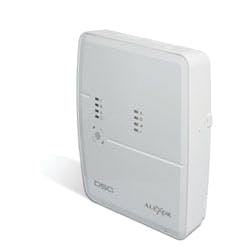Fire and Intrusion: New Products are Off the Hook
New wireless fire and intrusion products remove the wires, and the restraints, in specifications for integrators. We’ve got the low down on new products in both categories.
In addition to all these options, using this Napco panel you can duplicate all the conventional/wireless/addressable fire features (except the four NAC circuits) with a security alarm device build-out on the same panel. The panel will accept another SLC module dedicated to addressable security devices. Adding a Burg Bus gets you the same conventional and wireless capabilities used for the fire devices, which allows you to add security to your fire alarm project. You can then use a burg expansion module to add conventional and wireless security devices.
The DMP XTL panel isn’t just a wireless residential smoke/fire detection system; it’s wireless everything, even the keypads are wireless. If pushing buttons on the wireless keypads are too much for you, then try using the optional proximity cards for wireless arming and disarming. Even though the panel includes both an IP and DACT module, reporting can also be wireless through its standard, built-in cellular GPRS transmitter. The cellular feature also provides a wireless SMS text messaging configuration for wirelessly informing the customer of the system’s status by calling up to three cell numbers. These three cell phones can also wirelessly arm and disarm the system. Wireless key fobs and wireless output relays are available.
The XTL uses a separate supervised wireless siren, tampered, with a visual status LED. Now the sounder can be positioned away from the panel/keypad and attack, and where it is best suited for its own protection. (I have always considered it a design flaw for wireless security system manufacturers to build the siren into the surface mounted plastic control panel/keypad. The beeping keypad or wailing siren leads the intruder right to the weakest link and subjects it to attack. Destroying the siren means destroying the dialer, sometimes before it can complete its transmission.) However, with a “distributed system” with up to four wireless keypads, the main keypad/controller containing the GPRS transmitter can be positioned where it can best receive and transmit signals, such as the second floor master bedroom—not by the side door where it can be subject to immediate attack. You can even configure the wireless PIRs “over the air.”
Wireless Keeps on Getting Better
On the intrusion side of the wireless equation, better range, reliability and security has upped the use of detectors in residential and now increasingly in the commercial protected premises. Here’s a roundup of some of the latest products.
About the Author










